Flight MH370: Images of ocean debris
- Published
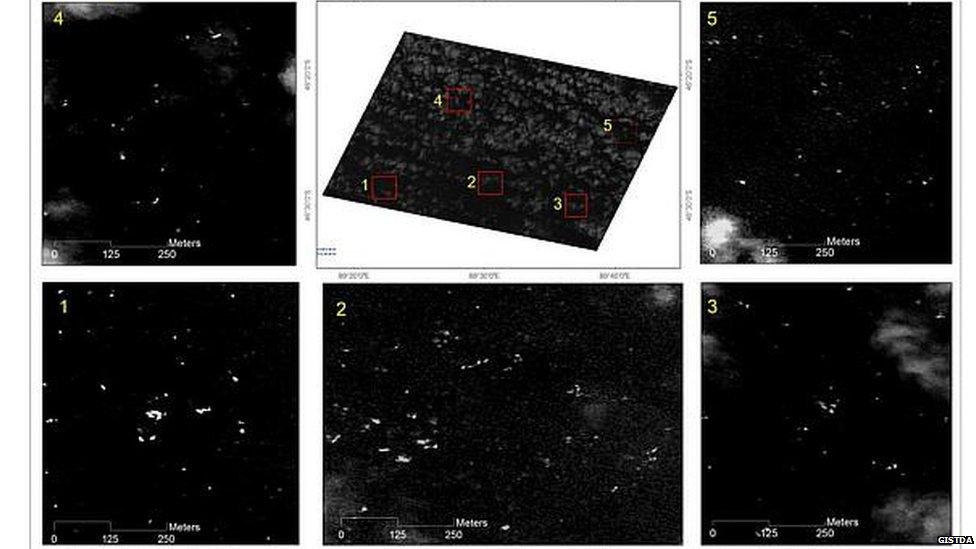
Search teams hunting for missing Malaysia Airlines flight MH370 have spotted hundreds of objects floating in the southern Indian Ocean.
A number of satellites and plane crews have detected possible debris off the coast of Australia in the last two weeks. Teams are now scouring a new area more than 1,000km (600 miles) further north than the previous search zone.
So far, none of these sightings has been related to the missing plane.
Here is what we know about the objects seen.
Location of debris sightings


1. Australian satellite spots objects on 16 March
Object 24m in length

Australian officials released images last week showing two whitish objects on or just under the surface of the ocean. They were spotted by satellite on 16 March, but not released until days later because it had taken time to analyse them, Australian Air Commodore John McGarry said.
Australia's Defence Imagery and Geospatial Organisation, which carried out the analysis, said the larger of the objects could measure up to 24m (79ft) long.
"The indication to me is of objects that are a reasonable size and probably awash with water, moving up and down over the surface,'' said John Young, general manager of the emergency response division of Amsa.
Mr Young added that the debris was spotted along a busy shipping route and could be containers that had fallen off cargo vessels. However, the larger object appeared to be longer than a container, he added.
Object 5m in length

On the same day, a second object was also spotted - estimated to be about 5m (16ft) long.

2. Chinese satellite spots objects on 18 March
Object measuring 22m by 13m
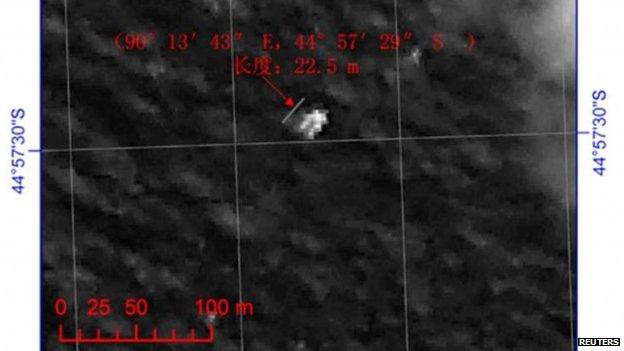
Latest image taken by China's Gaofen-1 satellite
On Saturday 22 March, China released a satellite image showing an object near to the area already being searched.
The grainy image was released by China's State Administration of Science, Technology and Industry for National Defense.
The Xinhua state news agency said the image was taken at about 04:00 GMT on 18 March and showed objects about 120km "south by west" from the site of possible debris shown in the satellite images from 16 March.
The image was taken by the Gaofen-1 high-resolution optical Earth observation satellite of China's National Space Administration.

3. French satellite detects objects on 21 March
Then, a day later, on Sunday 23 March, France's foreign ministry said data from a French satellite showed possible debris located about 930km (575 miles) north of where the objects reported by China and Australia.
Radar echoes had picked up several objects about 2,300km (1,430 miles) from Perth on 21 March, a statement added.
The data was passed on to Australian authorities in the form of "satellite-generated radar echoes" rather than images. Radar works by sending out radio waves or microwaves and listening for echoes that bounce back.
Malaysian officials later confirmed they had received a further set of images from French satellites, this time captured by cameras. These images were taken on 23 March and have been relayed to the Australian authorities coordinating the search.

4. Chinese plane spots objects on 24 March
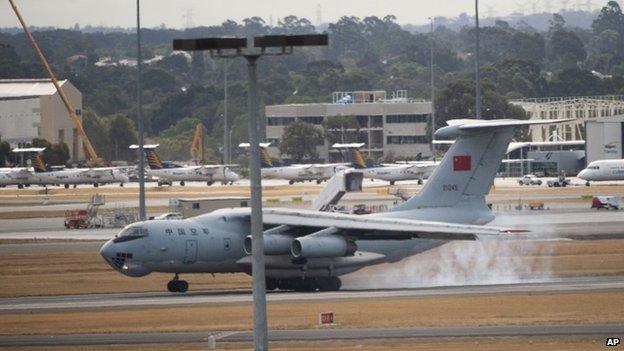
On 24 March, Chinese search teams reported seeing two "relatively big" objects with "many white smaller ones scattered within a radius of several kilometres", according to Xinhua news agency.
"When two of our IL-76 planes were searching the relevant suspected sea area, one of the planes photographed white, square floating objects," Chinese foreign ministry spokesman Hong Lei said.
"At present we are unable to confirm whether the floating objects are related to the missing passenger jet."
The crew of the Ilyushin IL-76 aircraft had given the co-ordinates of the objects to the Australian Maritime Safety Authority (Amsa) as well as China's ice-breaker Xue Long (Snow Dragon), which is heading to the area, Xinhua news agency said.

5. Australian planes spot objects on 24 March
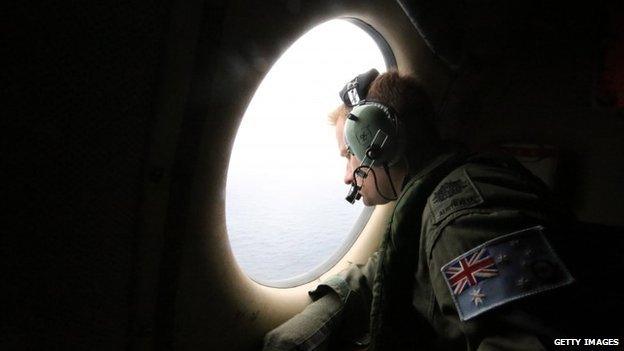
The same day, Australian prime minister Tony Abbott confirmed that an Australian search crew on board a P-3 Orion plane had also spotted two objects - the first "a grey or green circular object" and the second "an orange rectangular object".
Later, Australian crews confirmed they had seen four objects - one rectangular and one circular slightly below the ocean and two cylindrical objects, with one measuring up to two metres in length.
Australian navy supply ship HMAS Success is on the scene and is trying to locate and recover the objects in order to assess whether they are connected to the missing Malaysian Airlines jet.

6. French satellite detects 122 objects on 23 March
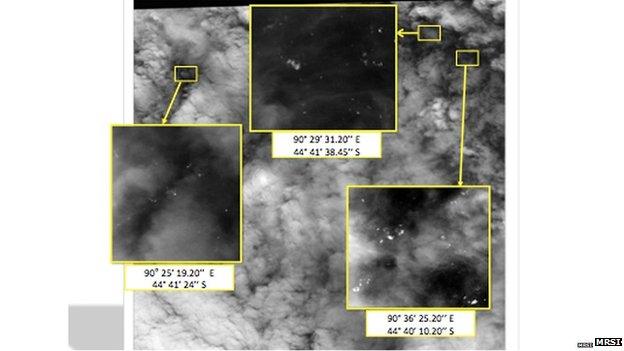
On 26 March Malaysian authorities confirmed images from 23 March showed 122 objects - with some up to 23m (75ft) in length. They were described as the first to suggest a debris field rather than just isolated objects and the most credible lead so far.
The potential debris was detected by a French satellite in an area of around 400 sq km (160 sq miles), about 2,557km from Perth.
The objects ranged in size from 1m (3ft) to 23m (75ft) long, with some said to be "bright", possibly indicating solid material, Malaysia's acting Transport Minister Hishammuddin Hussein said.

7. Thai satellite spots 300 objects on 24 March
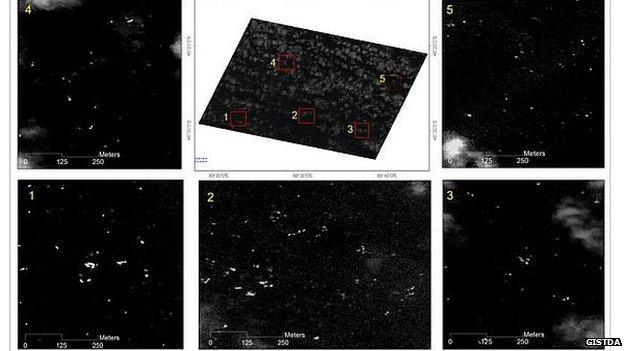
A day after the material was detected by the French satellite, a Thai satellite spotted 300 objects of varying sizes.
The images, taken by the Thaichote satellite on 24 March, show objects about 200km (120 miles) from the French satellite sighting.
Anond Snidvongs, of Thailand's Geo-Informatics and Space Technology Development Agency, told the BBC the objects ranged from 2m to 15m (6.5ft to 50ft) in size.
But he said he could not confirm they were debris from the plane.
Further satellite imagery from the Thai authorities showing potential debris was passed on to Malaysian authorities on Friday 28 March, Acting Malaysian Transport Minister Hishammuddin Hussein said.

8. Japanese satellite identifies 10 objects on 26 March
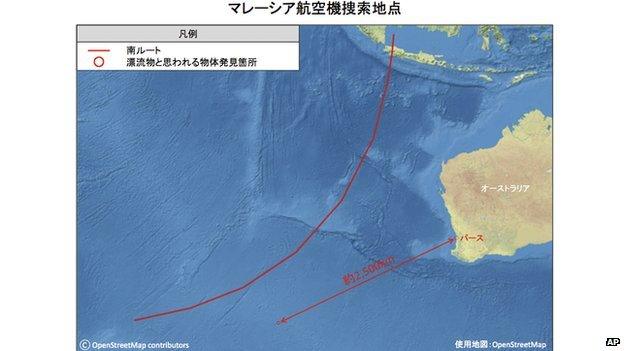
Japan's Cabinet Intelligence and Research Office confirmed on 28 March that its satellite had spotted 10 objects located about 2,500km (1,560 miles) southwest of Perth on 26 March.
This would place them in the same general area as the 122 objects spotted by the French satellite on Sunday 23 March.
The objects were up to 8m (26ft) in length and 4m (13ft) wide, officials said.

9. Five planes spot objects on 28 March
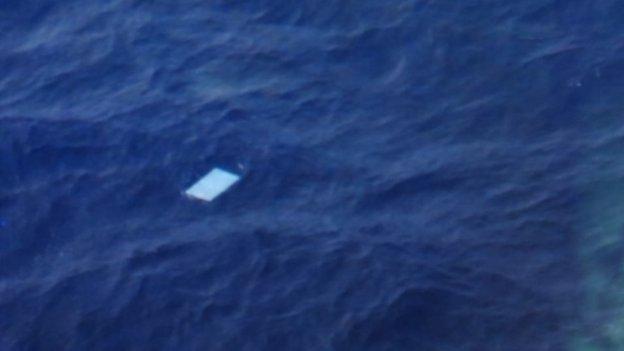
A number of search planes spotted objects on 28 March in a new search area established the same day.
A Royal New Zealand Air Force Orion first spotted "a number of objects white or light in colour and a fishing buoy", Australian authorities said. An Australian plane then went to relocate the items and spotted "two blue/grey rectangular objects". Three other planes reported similar sightings.
However, the sightings needed confirmation by ship, which is not expected until later.
Acting Malaysian Transport Minister Hishammuddin Hussein said that the fact that the search area had moved did not discount the earlier satellite images of possible debris further south.
"Because of ocean drift, this new search area could still be consistent with the potential objects identified by various satellite images over the past week," Mr Hishammuddin said.